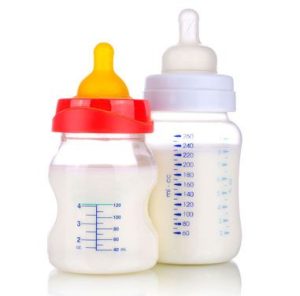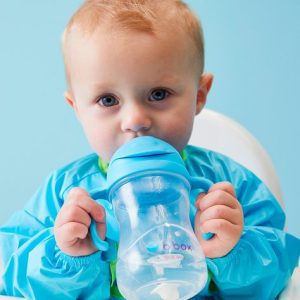There’s nothing more stressful than a crying baby, especially when you’re trying to feed them. Bottle feeding can be a wonderful way to nourish your little one, but sometimes it doesn’t go as planned. If your baby is crying during bottle feeding, it can be frustrating and confusing. Don’t worry, you’re not alone! Many parents experience this.
This article will explore some common reasons why babies cry during bottle feeding and offer solutions to help you soothe your little one and get them back to feeding happily.
Hunger Cues or Full Tummy?
Is your baby truly hungry?
Newborn babies feed every 2-3 hours, and their hunger cues become more spaced out as they grow. Watch for signs your baby is ready to eat, like rooting (turning their head towards your touch), sucking on their hands, or fussiness.
Maybe your baby is full.
Babies don’t always know how to pace themselves, and they may cry if they’re overfed. Pay attention to their feeding cues. If they turn away from the bottle or seem disinterested, they might be done.
Discomfort and Feeding Issues
Check for a wet or dirty diaper. A full diaper can be very uncomfortable for a baby. Changing their diaper before feeding can make a big difference.
Gas pain can be a real bother for babies. Burp your baby frequently during and after feeding to help release trapped air.
Is the nipple the right size and flow rate? Nipples come in different sizes and flow rates. A nipple that’s too slow can frustrate your baby, while one that’s too fast can cause them to choke or swallow too much air. Experiment with different nipples to find one that suits your baby’s sucking strength.
Temperature matters. Formula that’s too hot or too cold can be unpleasant for your baby. Make sure the formula is lukewarm, around body temperature. You can test it on your wrist before feeding.
Feeding position can impact comfort. Hold your baby upright, cradled in your arms, with their head slightly elevated. This helps prevent them from swallowing air.

Other Potential Causes
Teething can cause discomfort. If your baby is fussing and crying while feeding, especially when putting pressure on the bottle with their gums, they might be teething. Teething toys or chilled washcloths can help soothe their gums.
Could it be an illness? If your baby’s crying seems excessive or is accompanied by other symptoms like fever, diarrhea, or vomiting, consult your pediatrician.
Soothing Techniques
Sometimes, all your baby needs is a little comfort. Try rocking, singing, or talking to them in a calm voice. Skin-to-skin contact can also be very soothing for babies.
Establish a calming feeding routine. This can help your baby feel safe and secure.
Dim the lights and create a quiet environment. This can help your baby relax and focus on feeding.
Be patient! It may take some trial and error to figure out what works best for your baby.

When to See a Doctor
If your baby’s crying during bottle feeding is persistent and you’ve tried everything on this list, consult your pediatrician. They can help you determine the cause of the problem and recommend solutions.
Remember, you’re not alone! Many parents experience challenges with bottle feeding. With a little patience and troubleshooting, you can find what works best for you and your baby.

Feeding Cues and Techniques
Watch for your baby’s hunger cues. When a baby is ready to eat, they’ll show signs like rooting, sucking on their hands, or becoming fussy. These early hunger cues are ideal for starting a feeding.
Pay attention to feeding cues throughout the feeding. Your baby might turn away from the bottle, fuss, or clench their fists when they’re full. These are signs to stop the feeding. Following your baby’s cues helps prevent overfeeding, which can cause discomfort and spit-up.
Try paced feeding. This technique involves taking breaks during feeding to see if your baby is full. Place the bottle nipple out of their mouth for a moment and see if they fuss or root for it again. If they don’t seem interested, they might be done. Paced feeding can help your baby avoid overeating and gas pain.
Burp your baby frequently. Swallowed air can cause gas and discomfort. Burp your baby halfway through the feeding and again at the end. Hold them upright against your shoulder and gently pat their back until they burp.
Make sure you’re relaxed. Babies can pick up on your stress. If you’re feeling tense, take a few deep breaths to calm yourself before feeding. Creating a calm and relaxed feeding environment can help your baby feel more comfortable.

Different Bottle Options and Techniques
Consider trying different nipple shapes and flow rates. Nipples come in various shapes and sizes, designed to mimic a breast or provide a different flow rate. Experimenting with different options can help you find one your baby prefers.
Check the bottle itself for damage. Worn-out bottles can develop leaks or uneven flow, which can frustrate your baby. Regularly inspect your bottles for cracks or tears and replace them if needed.
Think about trying an anticolic bottle. These bottles are designed to reduce air bubbles in the formula, which can cause gas and discomfort.
Warm the bottle to a comfortable temperature. Formula that’s too hot or too cold can be unpleasant for your baby. Aim for lukewarm, around body temperature. Test it on your wrist before feeding.
Try different feeding positions. Some babies prefer to be held more upright, while others do well cradled in your arms. Experiment to find a position that seems comfortable for your baby.

Addressing Fussiness and Crying
Distraction can sometimes be helpful. If your baby seems fussy during feeding, try singing to them, talking in a soothing voice, or showing them a brightly colored toy. A little distraction can take their mind off any discomfort and help them focus on feeding.
Check for reflux. Some babies experience reflux, which can cause them to cry during feeding. If you suspect reflux, consult your pediatrician. They can recommend solutions to manage the discomfort and ensure your baby gets the nourishment they need.
Consider allergies or sensitivities. In rare cases, a baby might cry during feeding due to a milk protein allergy or intolerance. If you suspect this, talk to your pediatrician. They can advise on alternative formulas that might be easier on your baby’s digestive system.
